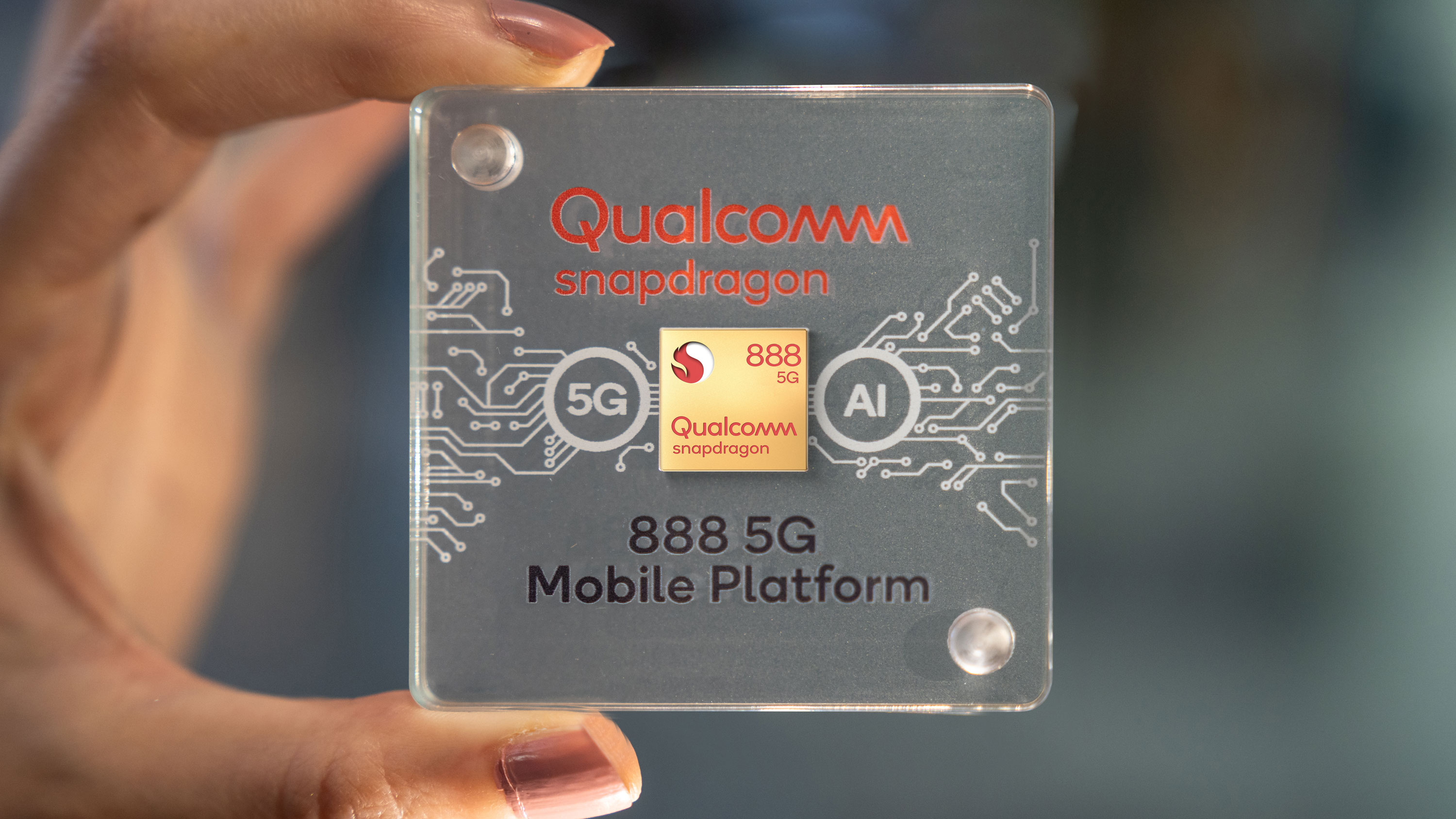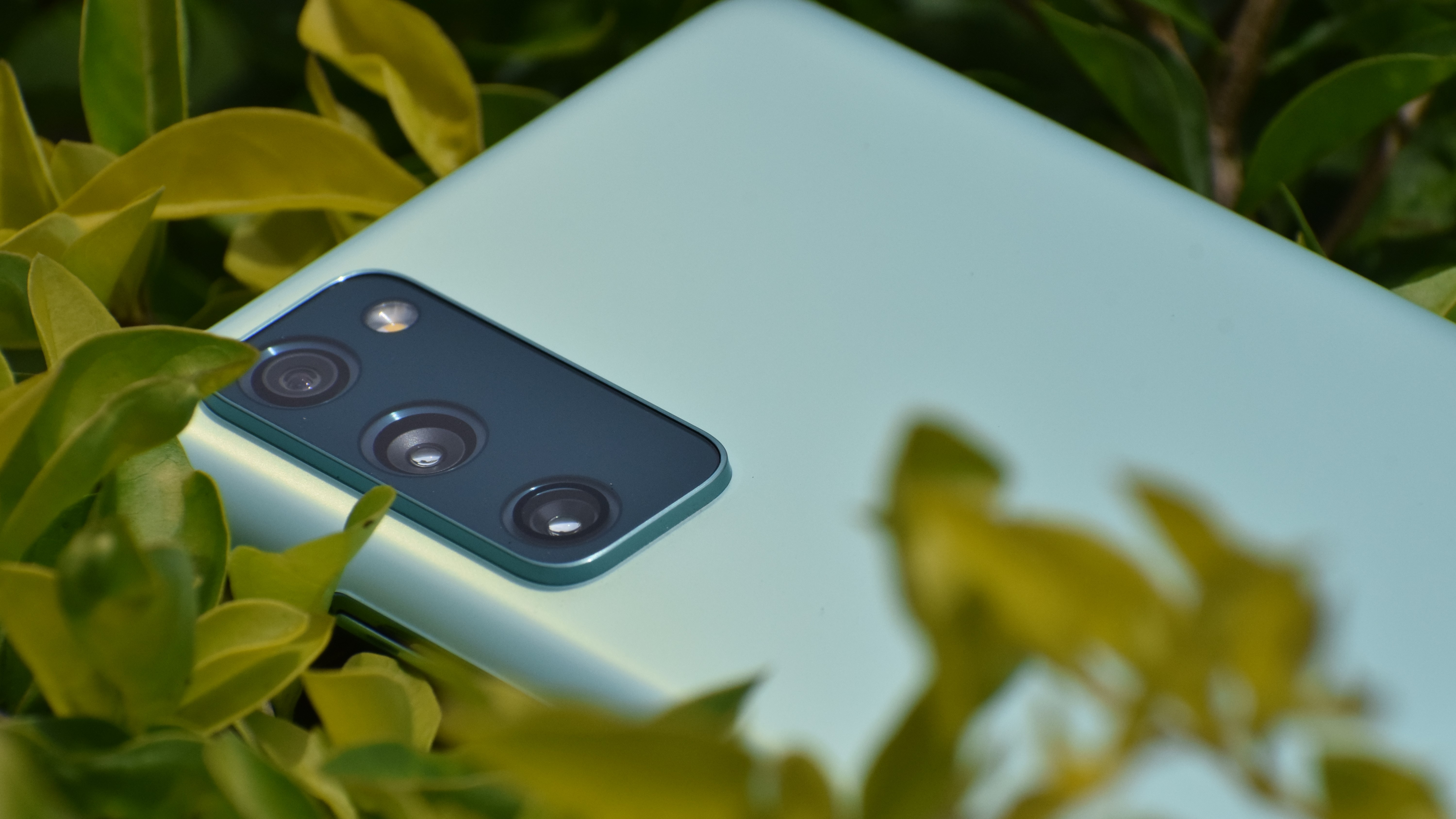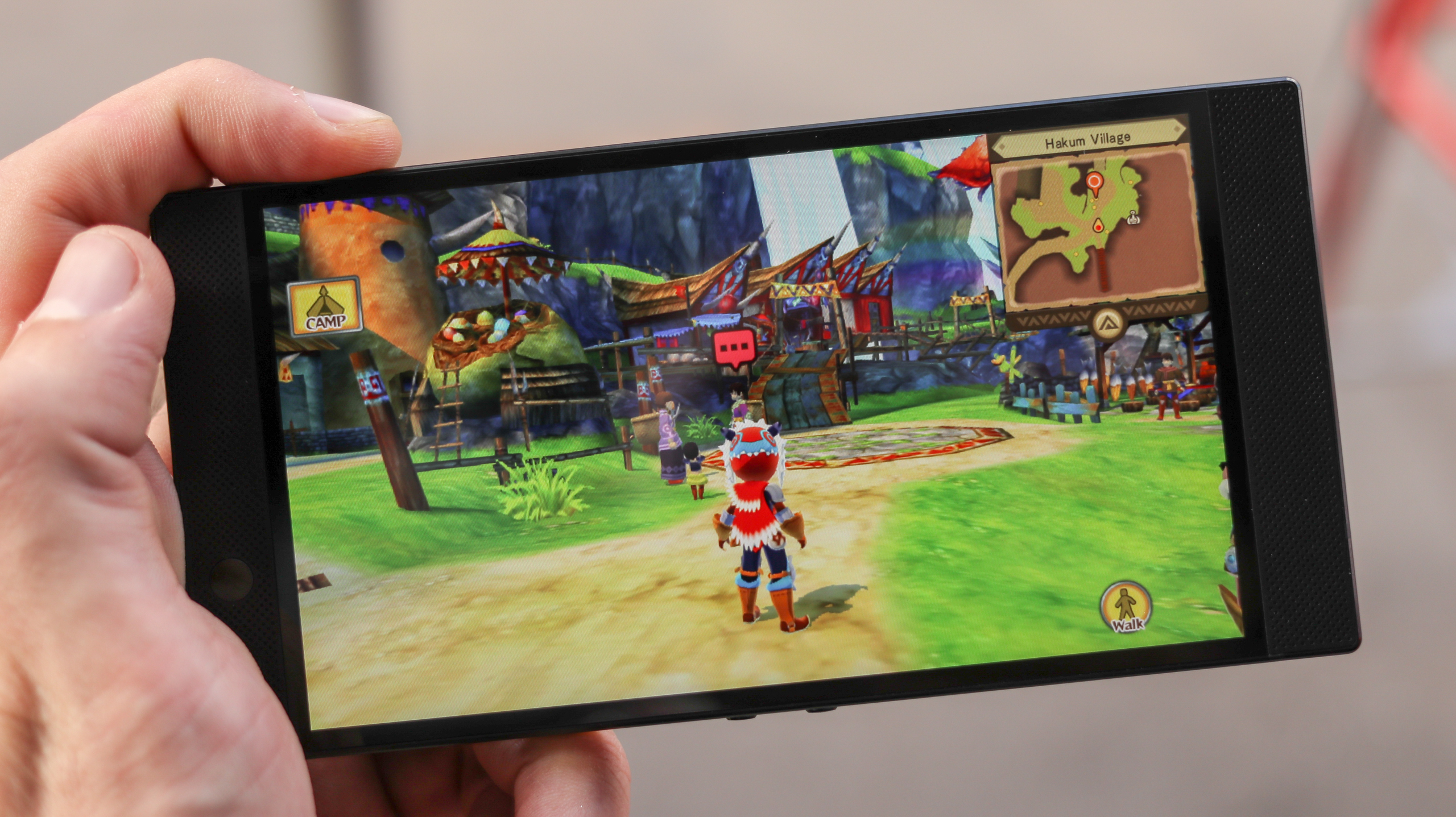Qualcomm Snapdragon 888: all the new upgrades coming to flagship phones

Qualcomm has announced the Snapdragon 888, its top-tier SoC (system-on-chip) which will be powering some of the biggest flagship smartphones in 2021.
The new chipset was announced during Qualcomm's Snapdragon Summit 2020 - an annual event where the chip maker unveils its latest technology for the next generation of phones.
What makes the announcement of the next flagship Qualcomm chipset exciting is the new features it will enable on future smartphones.
The previous 865 chip was found in variants of the Samsung Galaxy S20 range, the OnePlus 8 series and a huge variety of handsets from manufacturers such as Xiaomi, LG, Sony and more - which means the new Snapdragon 888 is likely to find its way into some of the biggest handsets of 2021.
Below you'll find everything you need to know about the new Snapdragon 888.
Cut to the chase
- What is it? A top-tier chipset to power the next-gen of flagship phones
- When's it out? First handsets will arrive in Q1 2021

Snapdragon 888 release date
- First phones: expected to arrive in Q1 2021
You won't be able to buy the Snapdragon 888 itself - rather, you'll be buying a new smartphone which has the chipset inside it.
The first Snapdragon 888 phones are expected to go on sale during Q1 2021, and Qualcomm has already confirmed a number of manufacturers have committed to using the chip in upcoming devices.
Sign up for breaking news, reviews, opinion, top tech deals, and more.
That means handsets from Asus, BlackShark, Lenovo, LG, Meizu, Motorola, Nubia, Realme, OnePlus, Oppo, Sharp, Sony, Vivo, Xiaomi, and ZTE will all boast the 888 chip.
One company we know won't be making smartphones with the Snapdragon 888 inside is Qualcomm itself, after it confirmed to TechRadar that it won't make its own smartphones.
- Snapdragon 888 phones: all the handsets set to use the new 888 chip
Snapdragon 888: cameras

- Triple ISP: three cameras operating together for photos or video
- Burst capture: 120 photos in one second, all at 12MP
- 4K HDR video: record and playback at 120fps
There's good news for mobile photographers, as the Snapdragon 888 chipset brings with it a host of new camera-related features.
One of the big additions is the triple ISP (image signal processor), which allows handsets to offer triple concurrency on their multiple cameras.
What does that mean? Basically, smartphones with the Snapdragon 888 will be able to capture three streams of 4K HDR video simultaneously. That could be three video feeds from the rear ultra-wide, wide and telephoto lenses for example, or video recording from two rear cameras and one front-facing camera all at the same time.
This could be especially useful to video editors, who will end up with three separate video files to edit from just one device.
The triple ISPs on the Snapdragon 888 can help photographers too. You'll be able to take advantage of triple photo capture, giving you the ability to capture three images, from three different lenses, at the same time, at up to 28MP each with no shutter lag.
As with the video recording, this will produce three images from one device - with each one providing a slightly different perspective depending on the lens it's from.
This ability allows three cameras to be running at once in the background too, so even when you're only using one, it can instantly switch between them, so there's no delays when swapping between, say, ultra-wide and telephoto.
Qualcomm has improved its burst capture technology on the Snapdragon 888, with handsets packing the chip given the ability to capture up to 120 photos in one second, all at 12MP. Useful for anyone looking to shoot action or sports, and Qualcomm says this is 35% faster than the Snapdragon 865.
The Snapdragon 888 is also set to improve low-light photography, with a new architecture that's able to capture shots in very low light, down to 0.1 lux.
There's support for 10-bit HDR HEIF photo (and video) capture as well, allowing you to take photos in over one billion shades of color. You'll be able to capture, save and display images in 10-bit, up from 8-bit previously.
As well as the triple 4K HDR video capture, smartphones with the Snapdragon 888 will also have the option to enable 4K video capture and playback at 120fps (frames per second), while computational HDR video capture allows for recording with extreme dynamic range - combining multiple exposures at 4K video rates. This will help not just for video recording, but also for video calls.
The Snapdragon 888 also allows photos to include a cryptographic seal, which confirms that they're genuine photos rather than fakes.
Snapdragon 888: gaming

- Smoother gaming: support for 144Hz displays and 144fps gameplay
- Faster response times: input response improved by up to 20%
- Variable rate shading: bigger worlds, grander stages, more immersive games
Gamers are catered for with the inclusion of the Snapdragon Elite Gaming suite on the SoC, which brings a number of enhancements to phones.
One of the biggest features here is support for 144Hz displays, and 144fps gaming. This is made possible by the new Adreno 660 GPU which is built into the Snapdragon 888, which Qualcomm claims is the "most significant upgrade in Adreno GPU performance" - something we'll put to the test when the first handsets land in 2021.
Another new feature is Qualcomm Game Quick Touch, which improves the touch input response times - ensuring your physical actions are translated instantly to the digital world.
Qualcomm says it has improved response times over the Snapdragon 865 by 10% at 120fps, 15% at 90fps and by 20% at 60fps - the latter of which is where the majority of games are played on mobile.
What's even better, is the improvement in response time doesn't require any further implementation from manufacturers or game developers - it will improve input for all games, across all genres, right out of the box.
A new Snapdragon 888 gaming feature which will require work from developers is variable rate shading.
It's the process of grouping pixels together, and shading fewer pixels, which is unnoticeable visually to the end user, but with 40% fewer pixels being shaded it frees up resources elsewhere.
This means we could well see bigger worlds, grander stages, and more immersive games, with it allowing for an up to 30% improvement in game performance. Previously this feature was only available on high-end PCs and consoles.
Snapdragon 888 also features support for Xbox Cloud Streaming, Google Stadia, and Amazon Luna, ensuring handsets are well prepared for the increase in the game streaming sector.
Overall, Qualcomm says its new Adreno 660 GPU in the 888 offers 35% faster graphics rendering and 20% better power efficiency over its predecessor. Its Kryo 680 CPU meanwhile offers up to 25% performance uplift and up to 25% better power efficiency.
Both the GPU and CPU are also said to be able to sustain their performance for a long period of time - something which Qualcomm claims some rivals don't.
Call of Duty Mobile, Fortnite and PUBG were all name-checked during the launch, so we may be seeing some specific improvements to those titles in the near future on flagship Android phones.
Snapdragon 888: 5G and connectivity
- Improved 5G speeds: up to 7.6Gbps download and 3Gbps upload
- Connections: W-Fi 6 and Bluetooth 5.2 support
The new Snapdragon 888 chipset features Qualcomm's latest X60 5G Modem, offering better connectivity and more support for the next generation network around the world, including enhanced mmWave support.
It's not the first Snapdragon chipset to come with 5G, but it does open up new speeds to handsets - with up to 7.5Gbps downloads and 3Gbps uploads. Those speeds will be entirely dependent on your handset and network coverage and the likelihood is you'll never see the speeds hit those heights, as this is data from lab conditions.
Does this mean you'll see more 5G phones in 2021? Almost certainly. In fact, we expect almost all flagship smartphones next year to be 5G ready. Most manufacturers are already moving that way, but it's likely it'll be even more of the norm next year.
It's not just 5G though, as the Snapdragon 888 comes with full connectivity, with its FastConnect 6900 system offering up Wi-Fi 6, Wi-Fi 6E, and Bluetooth 5.2 support.
There's been improvements to Qualcomm's Sensing Hub as well, which gathers 5G, Wi-Fi, Bluetooth and location data to make your handset far more location aware - providing better location readings and contextual awareness.
Snapdragon 888: AI
Qualcomm has also increased the AI capabilities on the Snapdragon 888, with the chip able to process far more operations per second versus its predecessor - making for more intelligent features and better power consumption.
Powered by the Hexagon 780 Processor, which offers up a 50% performance improvement, 2x compute capacity and 3x performance per watt improvement (three times the amount of processing with the same amount of power) over its predecessor, there's a lot for the sixth-gen Qualcomm AI Engine to work with.
The Snapdragon 888 is able to process 26 TOPS (trillion operations per second) vs 15 TOPS on the 865 - which means smartphones will be able to perform more tasks, more quickly.
An example of this performance improvement in action is in Snapchat, with an obvious speed increase in lens load times and performance during use.
AI improvements can help in all aspects of your smartphone usage, from social media filters, to auto focus and exposure in the camera app, to monitoring surrounding environmental noise and adjusting your volume accordingly, and more.

Snapdragon 888: battery life
With power efficiency enhancements made across the board with the Snapdragon 888, Qualcomm says that the new chipset will provide better battery life users.
The eight-core Kryo 680 CPU is 25% more power efficient than it's predecessor, the Hexagon 780 Processor provides a 3x performance per watt improvement and the Adreno 660 GPU is 20% more power efficient than the previous generation graphics unit.
However, it wasn't able to say exactly how much more life you'll be able to get from your phone, and it will be heavily dependent on how each manufacturer integrates Snapdragon 888 into their handsets and what other features are included - all of which could reduce the efficiency gains.
Which phones will feature Snapdragon 888?
A number of phone manufacturers have already been confirmed as using the Snapdragon 888 chipset in upcoming handsets.
Those companies are; Asus, BlackShark, Lenovo, LG, Meizu, Motorola, Nubia, Realme, OnePlus, Oppo, Sharp, Vivo, Xiaomi, and ZTE.
Xiaomi has said its next phone will be coming soon and it'll feature the Snapdragon 888. We expect that to be the Xiaomi Mi 11, but that has yet to be confirmed specifically.
Both Sony and Samsung aren't included on that list, but it doesn't mean those companies won't be supporting the Snapdragon 888 on flagship phones in 2021.
Sony even featured during the launch itself, so we'd expect any future top-end phones from that company to support this newer chip.
- Snapdragon 888 phones: all the handsets set to use the new 888 chip
Wait, where is the Snapdragon 875?
Originally we had expected the next top-end Qualcomm chip would be called the 875, but the company has instead changed its naming structure to make this the Snapdragon 888.
"We think 8 is a very special number from many culture and customer perspectives, and shows how great this product is - but no real reason [for the name change]", a Qualcomm spokesperson told us.
"8 has always been a special number for Snapdragon. For over a decade, the number 8 has stood for premium ... The number 8 is also a lucky number around the world. For some, it signifies infinity, success or inner wisdom, while for others it symbolizes luck."

TechRadar's former Global Managing Editor, John has been a technology journalist for more than a decade, and over the years has built up a vast knowledge of the tech industry. He’s interviewed CEOs from some of the world’s biggest tech firms, visited their HQs, and appeared on live TV and radio, including Sky News, BBC News, BBC World News, Al Jazeera, LBC, and BBC Radio 4.